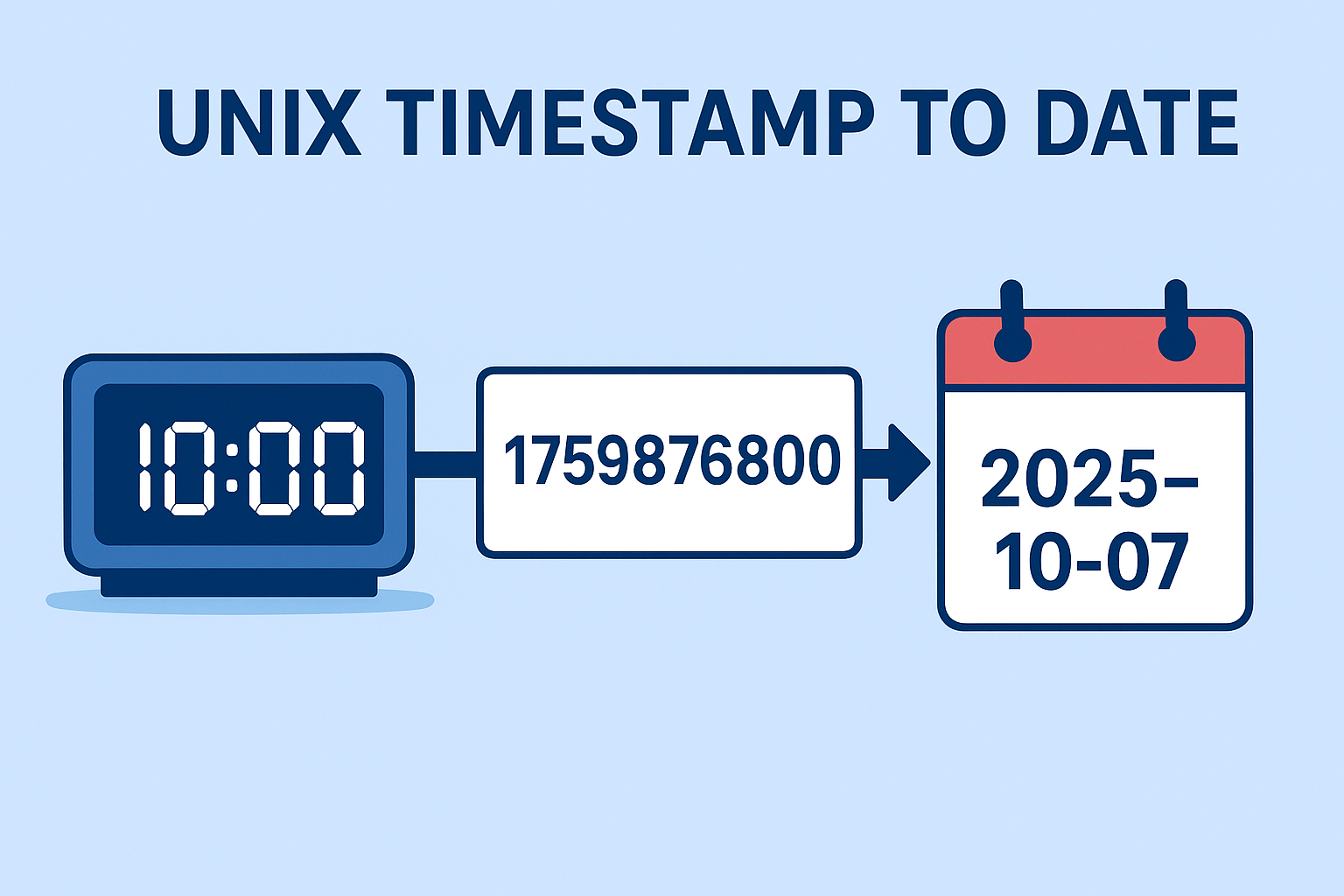
Unix Timestamp to Date
Created on 6 October, 2025 • Time Converter Tools • 11 views • 2 minutes read
Learn what a Unix Timestamp is and how to convert it into a readable date format. Understand its uses, benefits, and importance in data systems and programming.
Unix Timestamp to Date: A Complete Guide to Understanding and Converting TimeIntroduction
In the digital world, every event, message, and transaction happens at a specific moment in time. Computers, however, don’t understand time the same way humans do. They rely on a numerical system called a Unix Timestamp to represent dates and times. To make sense of these numbers, we often need to convert Unix Timestamps to Dates that are easy for people to read and understand.
What Is a Unix Timestamp?
A Unix Timestamp is a way of tracking time using a simple number. It represents the total number of seconds that have passed since January 1, 1970, at 00:00:00 UTC, also known as the Unix Epoch.
For example, instead of writing “October 7, 2025, 12:00 PM,” a computer might record the same moment as a long integer like “1759876800.” This timestamp is the universal standard for computers and digital systems to keep track of time accurately and consistently.
Why Use Unix Timestamps?
Unix timestamps are efficient, compact, and easy for computers to process. They have several advantages:
Consistency Across Time Zones: A timestamp represents a single moment in time globally, unaffected by local time zones.
Precision: It can record time down to the second or even millisecond.
Compatibility: Used in almost all operating systems, databases, and programming languages.
Ease of Comparison: Comparing two timestamps directly shows which event occurred first.
This makes timestamps ideal for logging events, scheduling tasks, and managing digital records.
Why Convert Unix Timestamp to Date?
While timestamps are great for machines, they are not intuitive for humans. You wouldn’t want to read “1759876800” in your calendar app. Converting a Unix Timestamp to Date allows us to transform this machine-readable number into a human-readable format, such as:
“October 7, 2025, 12:00 PM UTC”
“2025-10-07 12:00:00”
This conversion helps users interpret time more easily and ensures clarity in reports, logs, and databases.
How the Conversion Works
The conversion process involves turning the total seconds counted since the Unix Epoch into a standard date format. Each timestamp corresponds exactly to one unique date and time in the UTC standard.
Many systems and online tools can handle this conversion automatically. You simply input the Unix timestamp, and the tool instantly displays the corresponding date and time.
Common Uses of Unix Timestamp to Date Conversion
Converting Unix Timestamps is common in many areas, such as:
Software Development: Developers use readable dates for debugging or displaying event logs.
Data Analysis: Analysts convert timestamps to track when data entries were created or updated.
System Monitoring: Servers record events in Unix time for accuracy and performance tracking.
Web Applications: Websites often store time-based data in Unix format and convert it for user-friendly display.
Conclusion
The Unix Timestamp to Date conversion is more than a technical process—it’s a bridge between how computers track time and how humans understand it. Whether you are analyzing data, managing digital systems, or simply curious about how time works in technology, understanding Unix timestamps helps you interpret and organize digital events more clearly and accurately.
Popular posts
-
Barcode readerMisc Tools • 23 views
-
Color pickerMisc Tools • 21 views
-
SHA-256 generatorGenerator tools • 17 views
-
Exif readerMisc Tools • 17 views
-
Ip LookupChecker Tools • 16 views